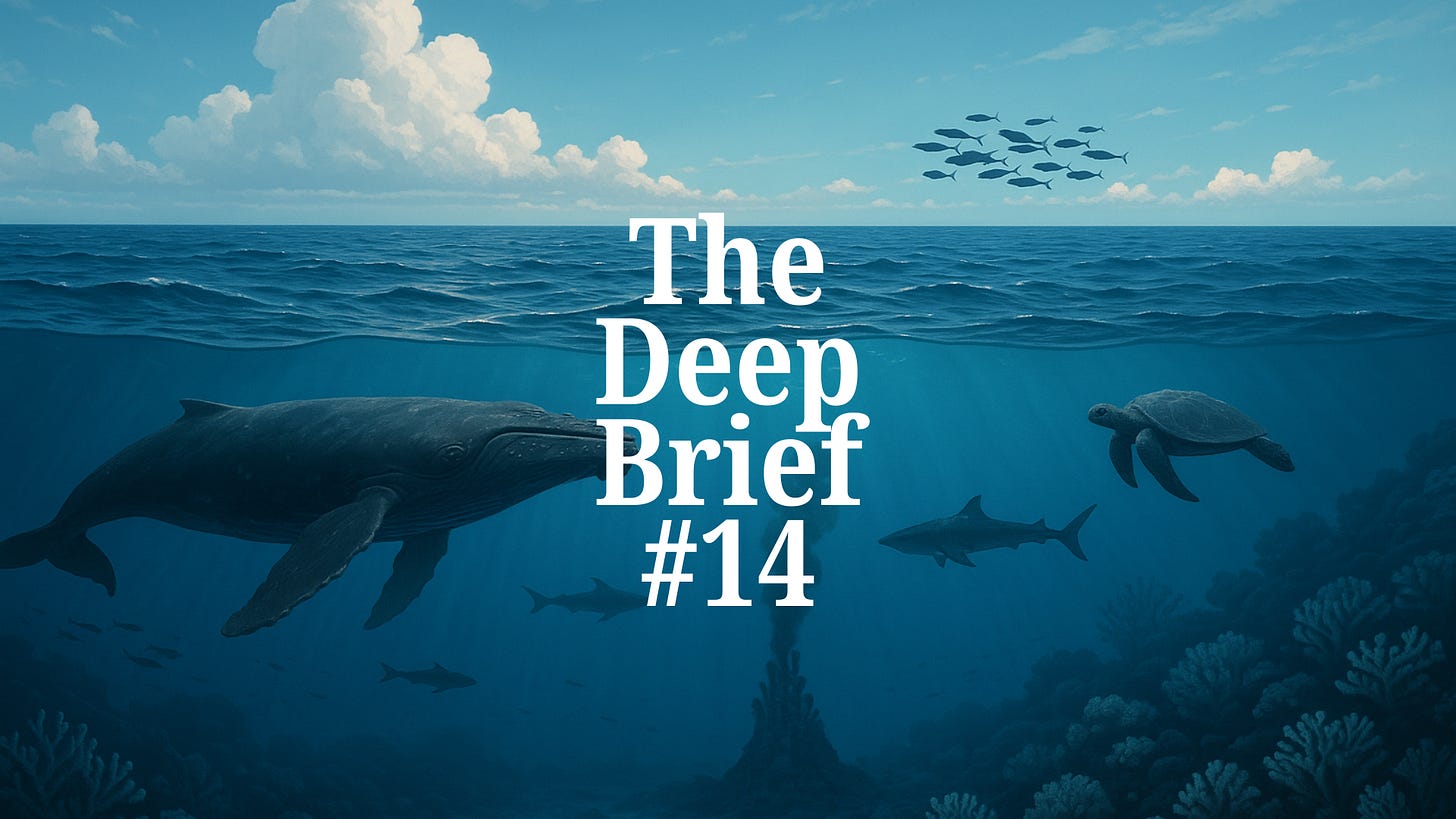The Deep Brief #14 | Special Edition
The Ocean Finally Has a Law
This is not a regular Deep Brief. Today’s edition is special, because we have reached a landmark moment for the ocean. With its 60th ratification, the High Seas Treaty has cleared the threshold to enter into force on 17 January 2026. For the first time in history, humanity has a legally binding agreement to protect life in the two thirds of the ocean that lie beyond national borders.
“This is a historic moment for ocean protection,” said Rebecca Hubbard, Director of the High Seas Alliance. “Achieving 60 ratifications is not the finish line, it is the starting block. The treaty’s true strength will come from universal participation and rapid implementation.”
United Nations Secretary-General António Guterres also praised the milestone. He said: “Our ocean has been under pressure for decades; we can no longer ignore the ocean emergency. This treaty is an important step forward in countering destructive trends and advancing ocean health for generations to come. It can ensure the conservation and sustainable use of marine biological diversity of over two thirds of our life-sustaining ocean space.”
This matters because the high seas are home to:
Blue whales migrating from Antarctic feeding grounds to equatorial breeding waters. These routes could now be safeguarded with protected corridors.
Sharks and tuna that regulate ecosystems but have been decimated by overfishing. These species will be subject to stricter environmental assessments.
Deep-sea corals, vents and seamounts harbouring species found nowhere else. These habitats may now be shielded from unchecked industrial exploitation and prospective mining.
Plankton that generate half the oxygen we breathe and lock carbon in the deep ocean. These lifeforms are now recognised as part of a planetary system that requires protection.
What the Treaty Actually Does
It creates tools that never existed before:
The power to establish Marine Protected Areas (MPAs) on the high seas.
A requirement that nations conduct environmental impact assessments before authorising activities such as large-scale fishing, shipping routes, or seabed mining.
Rules for sharing marine genetic resources (for example pharmaceuticals derived from deep-sea microbes) more fairly.
Mechanisms for capacity building and technology transfer so developing nations can play a full role in safeguarding the global commons.
What Happens Next in Real Terms
The treaty enters into legal force on 17 January 2026. From that day, the 61 countries that have ratified it are legally bound.
What ratification means: First countries sign to show intent, then they must ratify through their own national process (for example, a vote in parliament or a presidential decree). Only ratification makes the treaty legally binding.
The UN lists 145 signatories and 61 ratifying countries as of today. Signing is a political signal. Ratifying is a legal commitment.
The first Conference of the Parties (CoP) must meet within a year of entry into force, likely in late 2026. That is when rules for MPAs, monitoring, and compliance will actually be set.
Real change at sea, such as the designation of new high seas MPAs, will come only after those decisions. Optimistically, the first protections could be in place by 2027–2028.
Is the Ocean Safe Now?
This milestone is historic, yet it is not the endgame. Treaties live and die on enforcement, and the High Seas Treaty is no exception.
Only ratifiers are bound. At present 61 countries are legally committed. More than 130 UN members have not ratified. That includes some of the biggest fishing, shipping, and mining powers. Without them, loopholes remain.
Implementation is uneven. Ratifying governments must now translate the treaty into domestic law by passing bills, allocating budgets, and creating enforcement systems. That process can take years, and in some countries it may stall completely.
Enforcement is fragile. Monitoring the high seas requires satellites, observers, and naval capacity. Unless governments fund real monitoring, the treaty risks being words on paper.
Industrial pushback will be fierce. Longline fleets, deep-sea mining consortia, shipping giants, and fossil fuel interests all operate in international waters. They will lobby to weaken the rules, delay implementation, or limit the scope of new Marine Protected Areas.
The Paris Agreement parallel. Climate negotiations show how this plays out. Ambitious language is agreed at the signing table, then delivery is slow at home. The High Seas Treaty could transform ocean protection, or it could become a hollow framework, celebrated in headlines but ignored at sea.
This treaty gives us a law, but not yet the muscle to enforce it. Its strength will depend on whether nations invest political capital, money, and monitoring power. Without that, whales, sharks, plankton, and deep-sea corals will still be vulnerable. With it, there is finally a chance to meet the global target of protecting 30 percent of the ocean by 2030 and to safeguard two thirds of the planet that has never before been governed.
🔗 More: High Seas Alliance | UK Bill to Ratify | BBNJ Agreement Background




Exciting!
Good news. We need 100% compliance. Thanks for sharing this.